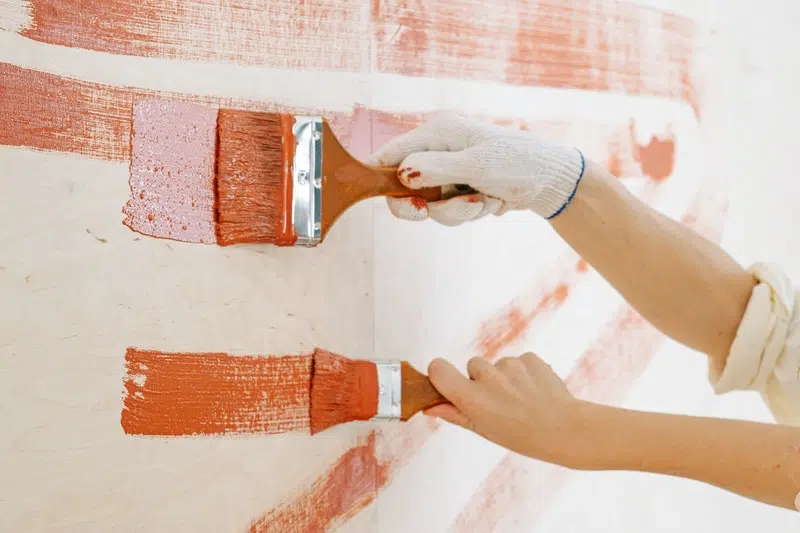
Picture the following scenario: you’re painting your home’s exterior and are working on the final layer to seal its newfound beauty.
Image Source: pexels.com
Applying the last bit of paint, you swish your brush in anticipation of finalizing a hard day’s work. Taking a step back, you and your family admire the fruit of your labor and head back inside for a celebratory snack and well-deserved relaxation.
Walking out of the house the next day, you turn to admire your residence’s new color only to meet an unexpected horror. Your beautifully upgraded abode is now the victim of a faded, flaky, and cracked paint job that can put anyone in tears.
Placing the theatrics aside, many homeowners witness similar situations where their exterior paint projects produced less-than-ideal results due to improper prep work or weather sabotage.
However, there are five handy techniques to waterproof exterior paint jobs to save you from heartache.
Whether part of an exterior or interior paint job, the material ages over time. When exposed to moisture and temperature fluctuations, paint can expand, bubble, and crack. Eventually, this leads to flaking colors.
It’s best to remove old paint residue with a pressure washer before applying a new coat. Doing so will expose the wall and help avoid moisture accumulation between layers and cracks.
Not only is lousy siding an attack on curb appeal, but it can leave a newly finished paint project susceptible to water damage. Moisture can flow between siding and paint and cause applications to flake off.
You’ll notice whether siding issues are present in your home if you identify mold, mildew, holes, and high utility bills. On the bright side, once you replace the material, you can select the best paint hue to boost your home and get to work.
Consider caulk as your home’s best friend; you should use it to seal all cracks and seams within secured siding to prevent water from impacting the new paint features.
If there are cracks in the siding, it provides a clear path for water to waltz in and warp applications.
Improper irrigation can seep into your home’s foundation and make its way into the wall. Once this happens, paint is vulnerable to dulling and flaking, requiring a new job. Remember that drains should lead water away from your property.
No matter the type of rain, most of it should hit your roofing and flow away from the home through the gutter system.
Image Source: pixabay.com
If water is hitting your property’s roof yet backsplashes toward the exterior walls, you might have to prep for another paint job. Ensure that gutters are correctly installed and efficiently direct water flow at a proper slope.
Talk about handy! While it is an extra step, utilizing these helpful techniques to waterproof exterior paint jobs is a saving grace that makes a notable difference in your home’s outward appearance.
You spend a lot of time in your home, so it’s important to create a…
If you love a modern house vibe, you can find several easy ways to update…
Are you looking to spruce up your home without breaking the bank? Home improvements don’t…
Florida, also known as the Sunshine State, boasts a vibrant real estate market filled with…
A backyard fireplace is the perfect feature to take any outdoor space up a notch.…
The kitchen, often referred to as the heart of a home, is where both meals…